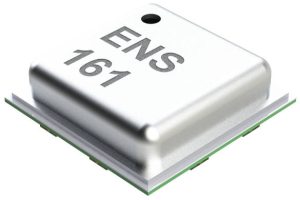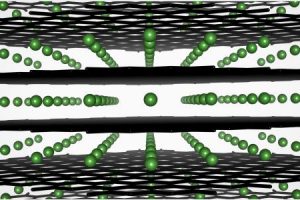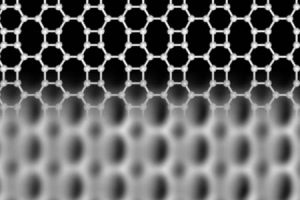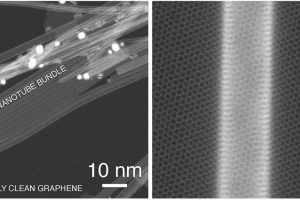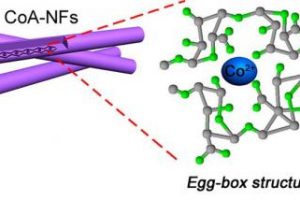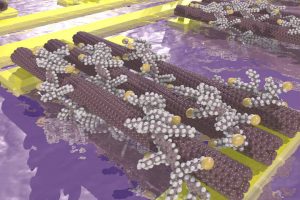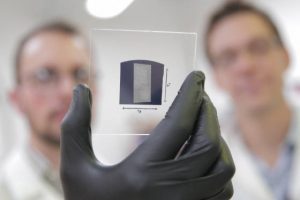ScioSense has created a gas sensor that outputs CO2, volatile organic compound and air quality indices. Inside the 3 x 3 x 0.9mm LGA package are four separate metal oxide gas sensors, each with its own hot-plate, plus a processor whose algorithms decode the four sensor outputs into: ‘equivalent CO2‘ (400 – 65,000ppm), total volatile organic compounds (0 – 65ppm), AQI-U ...
Tag Archives: carbon
Anglia is now carbon-neutral
Cambridgeshire distributor Anglia Components has achieved Carbon Neutral Scheme accreditation, in partnership with ClimatePartner, by offsetting carbon emissions due to its business operations and committing to further emission reductions. This is on top of maintaining an ISO 14001 compliant environmental management system. “When customers started to ask us about carbon offsetting, we took the decision that this was a concept ...
Flexible stretchy supercapacitors
The University of Surrey has created a flexible and stretchy supercapacitor “that can be easily integrated into footwear, clothing, and accessories”, it said. Building one involves transferring aligned carbon nanotube arrays from a silicon wafer over to a PDMS (polydimethylsiloxane) layer in which they are partly embedded. Polyaniline is then polymerised onto the surface of the nanotubes. In capacitors made from ...
Another reason why Li-ion cells don’t like fast charging
Argonne National Laboratory has been looking into lithium-ion cells in great detail, and its scientists have found a nano-scale deterioration mechanism to add to the reasons that fast-charged Li-ion batteries degrade in electric vehicles. In use, lithium ions move in and out of the anode, which is usually made from graphite particles. The ions slide between the carbon atoms in ...
NGK Insulators plans European plant switch to renewable energy
NGK Insulators, makers of EnerCera batteries, is to switch its European manufacturing facilities to renewable electricity by January 2022 as part of a plan to convert all of its non-Japanese bases to renewable energy by the end of fiscal 2025. NGK Ceramics Europe in Belgium will use completely green power, “procuring electricity generated through wind power as well as generating power ...
Enter biphenylene, a flat conductive carbon alternative to graphene
European scientists have made biphenylene, a theoretically predicted two-dimensional carbon material similar to graphene, but made of octagons, hexagons and squares instead of just hexagons. It has metallic properties, with stripes of the network 21 atoms wide behaving like a metal while, according to Aalto University in Finland, while graphene is a semiconductor at this size. “These stripes could be used ...
Use carbon nanotubes and graphene for better transparent conductors
Carbon nanotubes sprinkled onto graphene make a transparent conductor that is better than either on their own, according to Aalto University. But not because the graphene acts as a parallel conductor. Instead, temperature-dependent transport measurements indicate that the graphene substrate reduces the tunnelling barrier heights between nanotubes, according to the paper ‘Enhanced tunneling in a hybrid of single-walled carbon nanotubes ...
Seaweed provides naturally-hollow carbon
Porous carbon from seaweed could boost Li-ion batteries and fuel cells, according to researcher Dr Dongjiang Yang. “We wanted to produce carbon-based materials via a really ‘green’ pathway,” he said. “Given the renewability of seaweed, we chose seaweed extract as a precursor and template to synthesise hierarchical porous carbon materials.” While Yang was at Griffith University in Australia, he worked ...
Carbon nanotubes self-assemble from solution into transistors
Carbon nanotubes can self-assemble from solution into high electron mobility transistors, according to European researchers. A key trick, is to add thiol side chains to a polymer, which binds the tubes to gold electrodes. “The results look deceptively simple: a self-assembled transistor with nearly 100% purity and very high electron mobility, but it took ten years to get there,” said ...
Multi-nanotube transistors equal silicon for the first time
Engineers at the University of Wisconsin Madison have created carbon nanotube transistors that can equal the current density of silicon transistors.
 Electronics Weekly Electronics Design & Components Tech News
Electronics Weekly Electronics Design & Components Tech News
